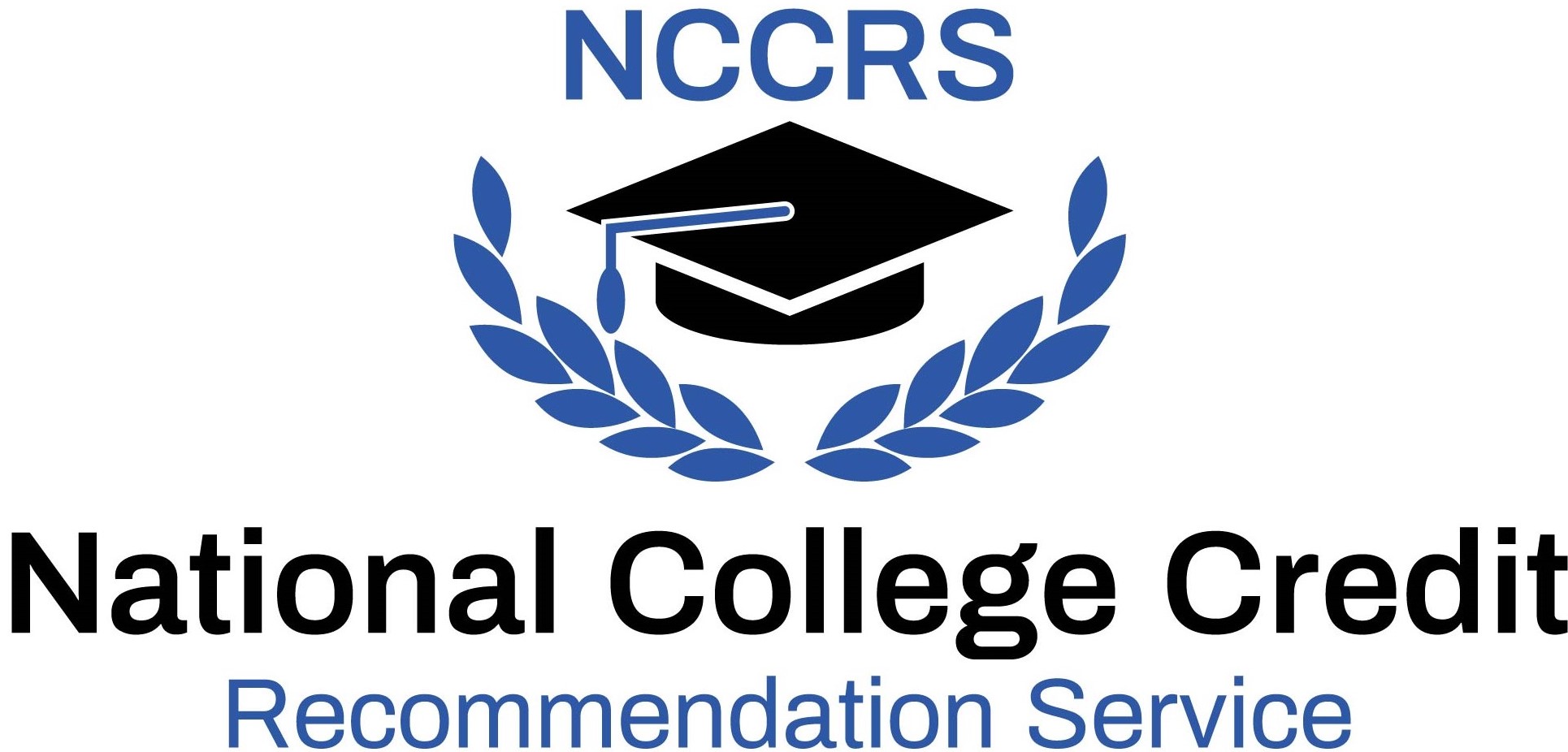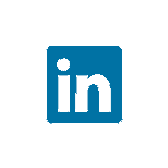Retired Learning Experiences - EdTech Institute
Descriptions and credit recommendations for all evaluated learning experiences
Course 1: 30 hours (15 weeks). Course 2: 30 hours (15 weeks). Course 3: 12 hours (4 weeks). Course 4: 12 hours (4 weeks). Course 5: 42 hours (14 weeks).
Course 1, 2, 3, 4, and 5: December 2008 - December 2018.
Course 1: Upon successful completion of the course, students will be able to: describe the relationship between hardware and software; describe peripheral devices; distinguish between types of storage devices; identify the main motherboard components; describe how instructions and data are stored on the motherboard; discuss how the CPU works and communicates with other devices; describe hardware and software interaction; identify system resources; outline the steps in booting up a computer; identify the properties of electricity; safeguard a computer system against electrical damage; identify computer cases and form factors; determine power requirements; troubleshoot power supply problems; identify types of motherboards; identify components on the motherboard; assemble a computer; install the motherboard; troubleshoot the motherboard; install peripheral I/O devices; use ports and expansion slots for add-on devices; install and troubleshoot keyboards; install and troubleshoot pointing devices; install and troubleshoot video cards and monitors; describe the different kinds of memory and how each kind works; upgrade and troubleshoot memory; discuss the workings of a floppy drive; manage floppy drives by using commands and Windows; replace a defective floppy drive, and add a second drive; identify various hard drive technologies; organize the hard disk logically to hold data; install a hard drive; manage and troubleshoot hard drives; discuss the basics of SCSI technology and its components; compare SCSI hard drives to IDE drives; troubleshoot SCSI devices; install various multimedia devices; describe optical storage technologies; discuss tape drives; evaluate and install removable drives; describe the use of hardware devices for fault tolerance; troubleshoot multimedia and mass storage devices; explain how a modem works and how to install it; use the AT command set to control a modem; troubleshoot problems related to modems; discuss the role of a PC technician in troubleshooting and maintenance, and discuss the tools used; approach a troubleshooting problem; develop a preventive maintenance plan; use guidelines when purchasing a PC; prepare for assembling a PC; assemble a PC from separately purchased parts. Course 2: Discuss how operating systems work, XP 2000 Windows operating systems, the differences between them and discuss advantages and disadvantages of common non-Windows operating systems; relate an OS to hardware and to other software, and launch an OS application; outline the steps to boot the computer, outline new features of Windows 2000 and describe the basic and dynamic disks, plan and perform the Windows 2000 installation, manage and use Windows 2000 and install hardware and applications with Windows 2000; outline the Windows 2000 boot process, troubleshoot the Windows 2000 boot process and use tools for maintenance, troubleshooting, and performance monitoring in Windows; outline the features and architecture of Windows XP, plan and perform Windows XP installation, customize the Windows XP desktop, manage audio and video, and allow multiple and remote logins under Windows XP, and install hardware and applications with Windows XP; use Windows XP features to secure the PC, view and update the Windows 2000/XP/2003 registry, use tools for troubleshooting and maintaining Windows XP, and troubleshoot the Windows XP boot process; support hard drives and tape backups, identify computer viruses and infestations and protection against them; outline the basics of networking, the different types of addresses used on networks, connect and share resources over a local area network and control a computer remotely; discuss how the OSI model applies to TCP/IP networks, such as the Internet, connect to the Internet using a dial-up connection, connect to the Internet using a cable modem or DSL connections and support some common Internet clients: discuss starting up, using and supporting hardware in the Mac OS, outline the file structure of the Linux OS and usage of some Linux commands, Windows 2000, and Windows XP notebook features and describe power management in notebooks. Course 3: Identify and open objects on the Windows desktop; use Windows XP Help and Support Center; navigate the folder hierarchy and search for files; manage files and folders and work with the Recycle Bin; create simple word processing documents and drawings by using the WordPad and Paint accessories; customize the desktop by creating desktop shortcuts and using the Control Panel; browse the Internet. Course 4: Customize the Start menu, taskbar and folder views; view and change file attributes and file associations; use advanced folder options; add a printer and manage print jobs with the print queue; manage user accounts; use fast user switching and employ basic user-level security; use System Restore, Disk Cleanup, Disk Defragmenter, Backup, and the Security Center; share folders and printer on a LAN and use shared resources. Course 5: Discuss basic networking concepts, including network types, network operating systems, server types, topologies, and planning in network design; explain the significance of the OSI Model, label the seven layers of the OSI Model, and describe the services provided by each layer of the OSI Model; discuss network adapter configuration, NDIS and ODI models, and troubleshoot network adapter problems; discuss the concept of protocols and channel access methods, and discuss transport, remote access, and security protocols; illustrate the basic properties, purpose, and functionality of network cabling, identify the characteristics and appropriate implementation techniques for various types of cables and connectors, and discuss Ethernet, Token Ring, and other devices; discuss inter networking, describe and contrast the functions of bridges, switches, and routers, and discuss routing protocols; describe the properties, benefits, and potential issues involved with POTS, ISDN, cable modem, xDSL, satellite, and wireless remote access methods, configure Windows XP/Server 2003 with a modem, establish a dial-up network connection by using Windows XP/Server2003, discuss Remote Access Service (RAS) and remote access clients, and discuss WAN connectivity; discuss the environmental factors that affect computer networks, define physical and logical indicators of network trouble, identify the function of common network tools, and discuss the science of troubleshooting; discuss the evolution of TCP/IP and the fundamentals of TCP/IP; identify each networked system as a host under TCP/IP, determine the IP address class and default subnet mask, and configure TCP/IP on a Windows XP/Server2003 computer; discuss the role of the HOSTS file, DNS, NETBIOS, LMHOSTS file, and WINS; discuss the purpose of firewalls and the functionality of a proxy server; identify the TCP/IP troubleshooting tools, discuss the Telnet utility, its functions, the functions the File Transfer Protocol (FTP) utility, and diagnose a problem and choose the appropriate troubleshooting tools; identify Network Operating Systems (NOS) features and discuss the features of Microsoft Windows, Novell NetWare, UNIX, Linux, Mac OS X Server and AppleShare IP; describe the network clients that are available to connect DOS-, Windows-, and Macintosh-based clients to a network; describe Windows security models, discuss directory services planning and implementation; describe Active Directory and the new features of Active Directory in Windows Server 2003; describe the Windows NT domain model, and explain the purpose of Novell Directory Services/eDirectory and the significance of NDS/eDirectory objects and bindery emulation; discuss user management and group management; identify the NTFS file system and file system security; explain shared folders and discuss Windows 2000/Server 2003 printing concepts; discuss Windows 2000/Server 2003 system monitoring using Task Manager; discuss troubleshooting using Event Viewer, and describe System Monitor and Performance Logs and Alerts; discuss user and group management in NetWare; describe file system security and rights and trustee assignments; discuss user account restrictions; explain NDS/eDirectory context; discuss NetWare log files, and use MONITOR.NLM, NetWare Remote Manager, as well as other utilities to monitor and manage a NetWare server and file system; discuss disk configuration, Windows-based replication, and NDS partitions and replicas, backup, and UPS; discuss the necessity of applying software patches and fixes, and describe viruses and anti-virus strategies; describe methods to help prioritize network problems, list the basic troubleshooting steps to be followed when working on a problem, and troubleshoot various problems that might occur on the network.
Course 1: Major topics include: computer components; hardware and software interaction; electricity and power supplies; motherboards; supporting I/O devices; managing memory and floppy drives; hard drives; Small Computer System Interface (SCSI); multimedia devices and mass storage; supporting modems; troubleshooting and maintenance; purchasing or building a PC; error messages; interrupts; the PC technician. Course 2: Operating systems; hardware and software management; boot process and command line management; installing and using Windows 2000; managing and troubleshooting Windows 2000; installing and using Windows XP; managing and supporting Windows XP; hard drive support; Windows networking; Windows inter networking; Mac OS, Linux, and notebooks; error messages; character sets; the PC technician. Course 3: The help system; working with files; Word Pad and Paint; customizing the workstation. Course 4: Customizing the user interface; files and folders; print management; managing multiple users; system utilities; sharing LAN resources. Course 5: Basic networking concepts; the OSI Model; network adapters; introducing protocols; network cabling and devices; inter networking components; remote and WAN connectivity; troubleshooting hardware components; TCIP/IP fundamentals; TCIP/IP addressing and subnetting; name resolution; firewalls and proxies; troubleshooting network connectivity; identifying network operating system features; network clients; directory services; accessing and managing resources in a Windows network; monitoring and troubleshooting a Windows server; managing and troubleshooting NetWare network resources; fault tolerance and disaster recovery; routine maintenance; troubleshooting.
Course 1 and 2: March 2006 - November 2010; May 2014 - December 2016. Course 3: March 2006 - December 2016.
Course 1: Identify the functions of a call center and determine the process for setting up a call center; identify the categories of ACD, technologies to monitor your employees, the benefits of skill-based routing, and how to determine call load and staffing; motivate employees, communicate effectively with employees, evaluate employee performance, and identify methods for monitoring employees; reduce employee turnover, manage stress, and train employees; identify customer expectations and manage customer relationships; set and achieve service levels, and use reports; identify the information that executives need and learn how to communicate with them. Course 2: Identify the goals and types of customer relationship management, and develop a customer relationship management program; manage and reduce costs associated with CRM implementation, and plan a CRM implementation; redesign work processes, identify reasons for implementing CRM in stages, and implement CRM; identify the features and disadvantages of eCRM, and automate CRM through CRM. Course 3: Distinguish among the different types of customers, appreciate the importance of customer service, build rapport and communicate with customers, and respond to customers while exceeding their expectations; develop customer service skills, provide quality customer service, and solve customer service problems; understand customer dissatisfaction, work with customers who are either angry or upset, and reduce customer service stress; understand the importance of effective communication, identify the importance of interpersonal communication, provide quality service on the telephone, and compose effective e-mail messages; discuss the basics of service standards, monitor service standards, and understand how management standards support exceptional customer service; build customer service teams, select right employees through effective screening and interviews, provide training and empowerment, and motivate employees to maintain desirable behaviors; understand their customers and how they measure service, develop loyalty in customers, understand how employee loyalty affects service, and create memorable service.
Course 1: Topics include: establishing and setting up a call center; service and information technology; call load and staffing; employee motivation; communication with employees; employee performance evaluation; employee monitoring tools; reducing turnover; stress management; training; customer expectations; customer relationship management; setting and achieving service levels; analyzing reports; information that executives need; communicating with executives. Course 2: Customer loyalty; market intelligence enterprise; customer information; a customer relationship management (CRM) program; CRM and expenditures; implementation planning; CRM implementation preparation; the implementation process; eCRM fundamentals; eCRM and automation; eCRM customization; eCRM goals. Course 3: Fundamentals of service standards; monitoring service standards; teams as a service solution; team training and empowerment; motivation; understanding customers; customer loyalty development; influence of employee loyalty; memorable service.
Course 1 and 2: Upon successful complletion of the course, students will be able to: identify and describe the functions of each of the seven layers of the OSI reference model; identify the reasons why the networking industry uses a layered model; define and explain the conversion steps of data encapsulation; define and describe the function of a MAC address; describe connection-oriented network service and connectionless network service, and identify the key differences between them; explain the uses, advantages, and disadvantages of repeaters; explain the uses, advantages, and disadvantages of hubs; define wireless access points; define network segmentation; explain network segmentation using bridges; explain network segmentation using switches; explain network segmentation using routers; explain network segmentation using routers and gateways; discuss the origins of TCP/IP; understand the different classes of IP addresses; configure and verify IP addresses; subdivide an IP network; identify and discuss the different layer functions of TCP/IP; describe the functions performed by protocols in the TCP/IP protocol suite, including ICMP, UDP, TCP, ARP, and RARP; use ping and trace and describe their functions; understand advanced routing concepts such as CIDR, summarization, and VLSM; discuss the different physical topologies; describe various network architecture models; determine which types of network media to use given a set of requirements; understand horizontal cabling standards and wiring closets; consider performance requirements and improvements for given situations; install a telecommunications connector; wire a patch panel; test network cable; discuss LAN design; describe the function that network-management tools perform on a network; describe WAN standards; explain the WAN connection methods; discuss WAN data link protocols; understand the WAN physical layer; recognize the various WAN physical topologies; emerging WAN connection methods; describe the benefits of network segmentation with routers; understand the elements of the Cisco router user interface; configure the Hyper Terminal program to interface with the Cisco router; describe the various router configuration modes; describe the various router passwords; understand the enhanced editing features of the Cisco IOS; understand the elements of the Cisco switch user interface; compare router components to typical PC components; understand router startup; describe and use the Cisco Discovery Protocol; understand configuration management commands for Cisco router and the 1900 series switch; configure IP on the Cisco router and the 1900 series switch; troubleshoot router connectivity problems; understand the purpose and operation of network address translation (NAT); configure static NAT, dynamic NAT, and dynamic NAT with overload; understand and configure port address translation (PAT); differentiate between nonroutable, routed, and routing protocols; define Interior Gateway Protocols, Exterior Gateway Protocols, distance-vector routing protocols, and link-state routing protocols; explain the concepts of count-to-infinity, split horizon, split horizon with poison reverse, and hold-down timers; describe, configure, and monitor the interior routing protocols RIP and IGRP; explain static routing and administrative distance; configure static routing and default routes; describe classful and classless routing protocols; describe and configure RIPv2; describe and configure EIGRP; describe and configure OSPF; control routing traffic; describe the usage and rules of access lists; establish standard IP access lists; produce extended IP access lists; apply access lists to interfaces; monitor and verify access lists; describe PPP encapsulation; configure PPP encapsulation and its options; describe and enable PPP multilink; explain how to implement ISDN BRI on Cisco routers; configure an ISDN BRI connection; understand Frame Relay standards and equipment; describe the role of virtual circuits and performance parameters in Frame Relay; understand the Frame Relay topologies; understand the difference between multipoint and point-to-point configurations; configure and monitor Frame Relay; explain the features and benefits of Fast Ethernet; describe the guidelines and distance limitations of Fast Ethernet; define full- and half-duplex Ethernet operations; distinguish between cut-through, fragment-free, and store-and-forward LAN switching; define the operation of the Spanning Tree Protocol and its benefits; describe the benefits of virtual LANs; and explain the purpose of the VLAN trunking protocol (VTP).
Course 1 and 2: Major topics include: introducing networks; network devices; TCP/IP and IP addressing; network topology and design; WAN concepts; router and IOS basics; router startup and configuration; routing protocols and network address translation; advanced routing protocols; access lists; PPP and ISDN; frame relay; switching and VLANs; CCNA certification objectives.
Course 1: Students will be able to: discuss basic terminology and concepts; discuss the history of fiber optics communications; discuss basics of fiber optics technology, the components used, and their installation; discuss applications of fiber optics communications systems; describe common types of cables and discuss where they are used; identify basic types of connections and splices; prepare fiber optic cable; pull, splice, and terminate fiber optic cable; test fiber optic cable using power meters and OTDRs; prepare the cable. Course 2: Students will be able to: discuss the theory and practice of fusion splicing fiber optics; compare mechanical splicing and fusion splicing; operate a fiber optic fusion splicer; prepare and cleave the fiber; protect and evaluate splice quality; measure splice loss; troubleshoot problems that occur in fusion splicing.
Course 1: This course addresses applications of fiber optics including telephone, CATV, and computer networks. Discussion focuses on the basics of technology, the components used, and how to design and install fiber optics; new applications, and new components and processes that have become widely used in the industry; and the future of this rapidly evolving technology. Topics include: basics of fiber optic technology, components, and applications; industry standards that apply to the cable plant, installation, and testing; safety and how to handle and install fiber optic components safely; how fiber optics is used in telecom, data communications, CATV networks, CCTV, security, and process control; the basics of network cable plant design; cable types and specifications; choosing an appropriate cable, handling cables, and pulling cables; connector types, terminating, fusion and mechanical splices, and installation tools; installation of connectors on fiber optic cables; test procedures, specifications, and standards; types of fiber optic test equipment, specifications, and applications; and performing basic tests; testing cables, connectors, splices, network equipment, fault location, and testing installed cables with OTDRs; fusion splicing. Laboratory exercises support instruction. Course 2: This course is a continuation of Fiber Optics (080). Topics include: fusion splicing; comparing fusion splicing to mechanical splicing; using a fusion splicer; preparing the fiber; loading the splicer; splicing fibers; protecting the splice; splice troubleshooting; basic safety rules. Laboratory exercises support instruction.







